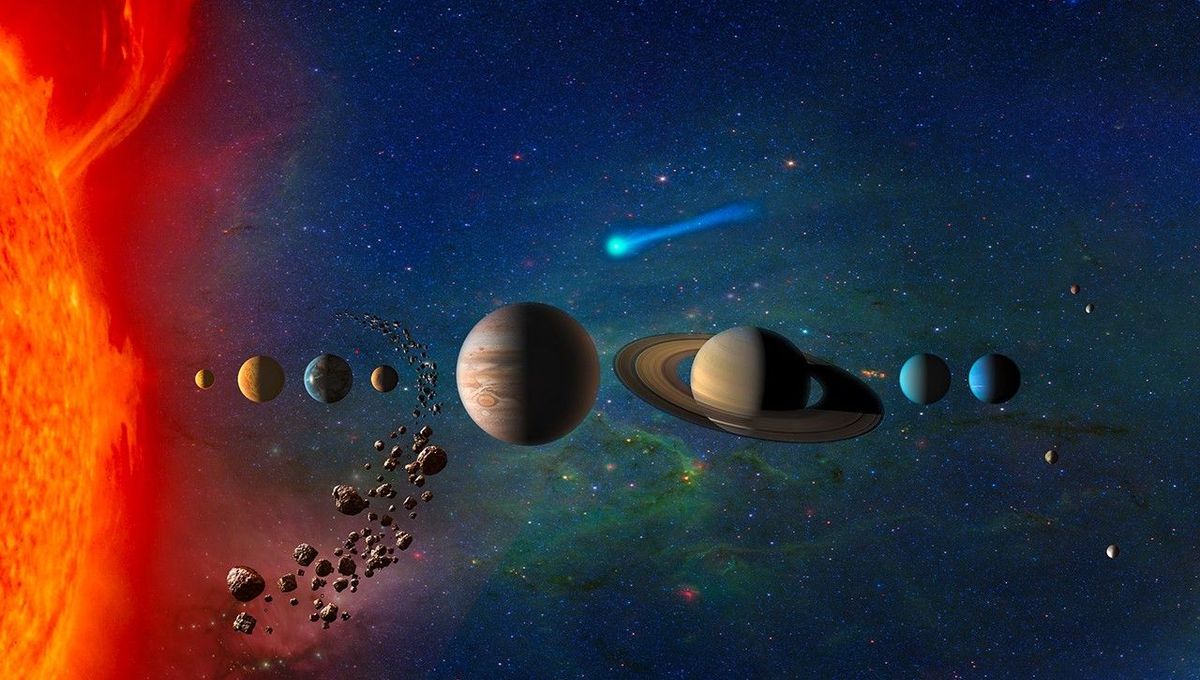
The movements of the planets in the Solar System are pretty difficult to get your head around, even before we get started on the dark matter which seems to keep galaxies together and rotating with ridiculous speed.
One common question people seem to have about the planets’ orbits is why the planets are drifting away from the Sun, given the Sun’s strong gravitational pull keeping the Solar System together. The Earth, for example, is moving away from the Sun at the breakneck pace of about 1.5 centimeters (0.6 inches) per year. While nothing dramatic, it’s easy to see why this causes confusion, given that many people understand gravity as an inwards curvature of spacetime, and don’t look into the Sun’s mechanics too often.
First up, the Earth and other planets aren’t being flung out by dark energy. The expansion of the universe only affects regions of the universe not bound together by other forces. So the expansion does not affect the distance between the objects in the Solar System (like between the Earth and the Sun) as they are held together by the force of gravity. Meanwhile, gravitationally unbound objects – like two galaxies far enough away from each other to not be held together by gravity – move away from each other as the space between them expands.
The reason why planets don’t fall into the Sun in the first place is their sideways motion.
“Our planet is traveling very fast — about 67,000 miles per hour [107,826 kilometers per hour] — almost entirely sideways relative to the Sun,” NASA explains. “The only way to get to the Sun is to cancel that sideways motion.”
This motion was conferred onto the planets as they formed in the protoplanetary disk.
So, does that mean that the reason why the planets are moving away from the Sun is because they are somehow speeding up? Also no.
The reason why the planets are drifting is because the Sun is, incredibly slowly, converting mass to energy in nuclear fusion, and losing mass through the solar wind.
“As the Sun converts hydrogen into helium by nuclear fusion there is a decrease in the Sun’s mass, M and the release of energy through electromagnetic and particle radiation. The continued, steady loss of mass from the Sun results in a reduced gravitational attraction and an expansion of the orbits of the planets,” astronomers from the Massachusetts Institute of Technology, Department of Earth Atmospheric and Planetary Sciences, explained at the 19th EGU General Assembly.
“Estimates of solar electromagnetic and particle flux suggest the sun is losing of order 10-13 of its mass/year, corresponding to an increase in the radius of Earth’s orbit of 1.5 cm/yr [0.6 inches per year].”
You may have heard that the Sun may eventually devour the Earth. While this sounds at odds with the planets moving away from the star, the reason is down to how the Sun will evolve in the later stages of its life.
“When a main sequence star less than eight times the Sun’s mass runs out of hydrogen in its core, it starts to collapse because the energy produced by fusion is the only force fighting gravity’s tendency to pull matter together,” NASA explains. “But squeezing the core also increases its temperature and pressure, so much so that its helium starts to fuse into carbon, which also releases energy. Hydrogen fusion begins moving into the star’s outer layers, causing them to expand. The result is a red giant.”
During this stage, the outer layers will expand so much that it will engulf Mercury, Venus, and (maybe) the Earth. But thankfully, not for another five billion years.
All “explainer” articles are confirmed by fact checkers to be correct at time of publishing. Text, images, and links may be edited, removed, or added to at a later date to keep information current.
Source Link: If The Sun's Gravity Is So Strong, How Come All The Planets Are Moving Away From It?